What is Ontario Doing?
To prevent these unwanted invaders from coming into the province, Ontario has regulated all four species of Asian carps (Silver Carp, Bighead Carp, Grass Carp, and Black Carp) as prohibited under the Invasive Species Act, 2015. For more information on the Invasive Species Act and Regulations, visit www.ontario.ca/invasionON.
Background
Asian carps were brought from Asia to North America in the 1960s and 70s. Since then, they have migrated north through U.S. waterways towards the Great Lakes. Preventing Asian carps from spreading into the Great Lakes is the best way to prevent harm to Ontario’s native fish species and our ecosystems.
Asian carps (Silver Carp, Bighead Carp, Grass Carp, Black Carp):
- Are successful invaders that have replaced native species in areas of the Mississippi River and its tributaries.
- Make up more than 50% of the fish by weight in some parts of the Illinois River, with anecdotal numbers suggesting 9 out of 10 fish in the invaded ecosystems are now Asian carps.
- They consume up to 40% of their body weight each day of their respective diets, which leaves little food for native fishes to eat.
- Can grow more than 25 cm (10 in) in their first year., quickly outgrowing the ‘gape’ (mouth) size of any would-be predators in our waters (e.g. Muskellunge, Northern Pike, etc.).
- Typically weigh 2-4 kg, but can weigh up to 40 kg and reach more than a metre in length.
- They reproduce rapidly, with females being able to lay up to one million eggs in a single spawning event. They spawn similarly to our native salmons, migrating up tributaries to lay their eggs into the water column.
Impacts of Asian Carps
- Asian carps prefer cool to moderate water temperatures, like those found near the shores of the Great Lakes. If Asian carps become established in Ontario’s waters, they would eat the food supply that our native fish depend on.
- In addition to consuming large amounts of plankton (Silver Carp and Bighead Carp), vegetation (Grass Carp), and native clams (Black Carp), Asian carps would outcompete our native species for space, growing quickly and reaching dense numbers.
- The decline of native fish species through direct competition for food and space would damage the sport and commercial fishery in Ontario, which brings millions of dollars a year into the province’s economy.
- Silver Carp are a hazard for boaters, since the vibration of boat propellers can make Silver Carp jump up to three metres out of the water. Boaters and water-skiers in areas of the Mississippi and Illinois rivers have been seriously injured by jumping fish.
How to Identify Asian Carps
Bighead and Silver Carp represent the most severe threat to Ontario’s waters. Grass Carp are the most imminent threat to Ontario’s waters.
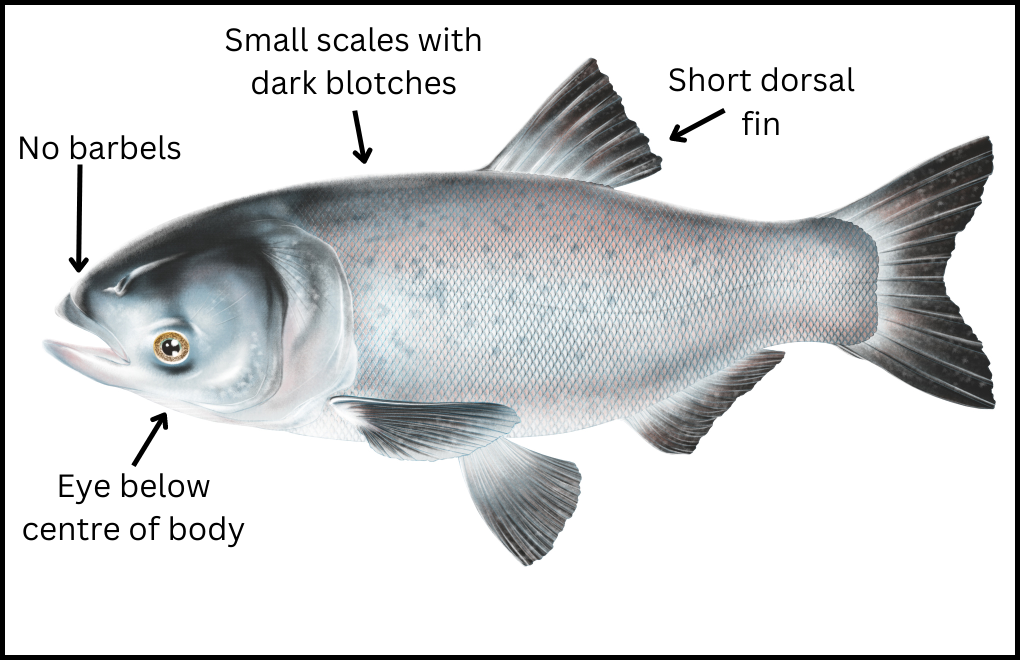
Bighead Carp
- Typically 2-4 kg; up to 40 kg in weight and more than a metre (3 feet) in length.
- Very large head and toothless mouth.
- Adult fish are dark grey with dark mottling.
- Eyes sit below the mouth.
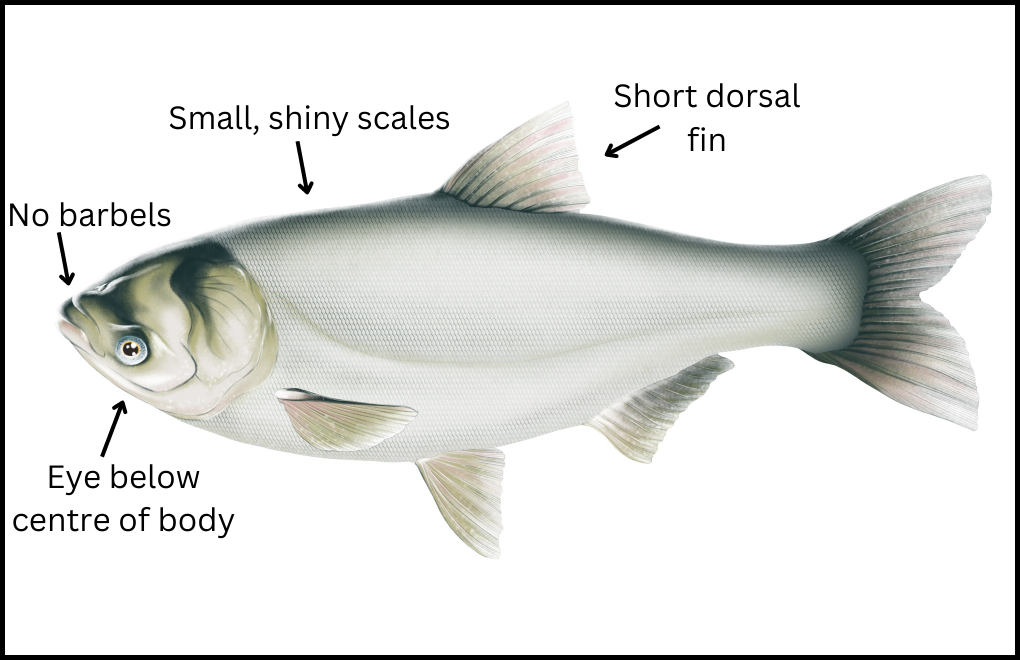
Silver Carp
- Smaller than Bighead Carp.
- Light silver in colour with a white belly.
- Eyes sit below the mouth.
- Most abundant of the four species in their invaded ranges.
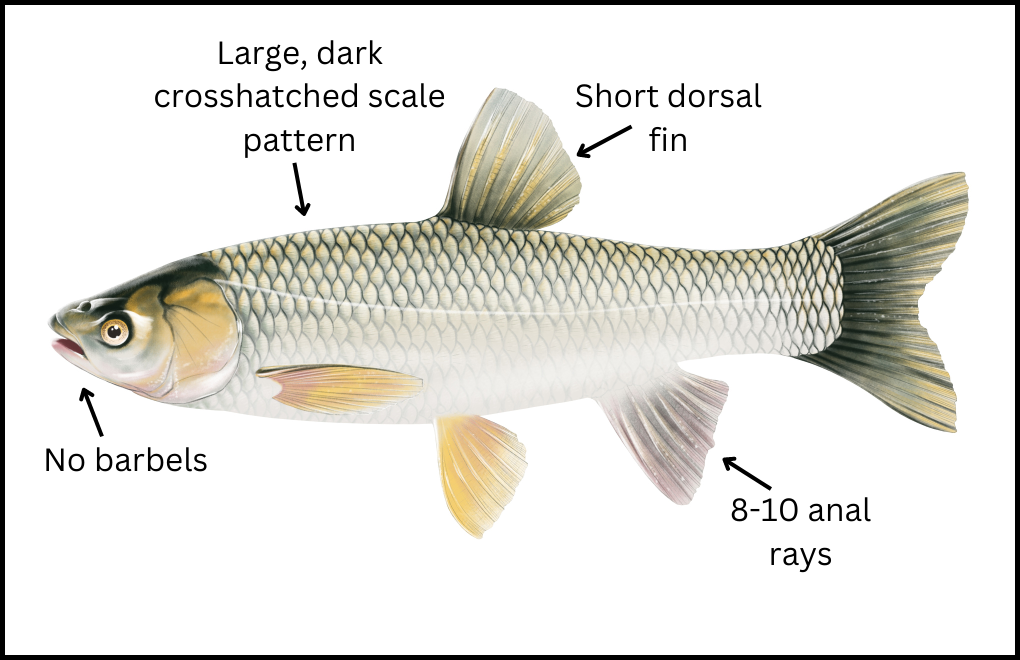
Grass Carp
- Large scales that appear crosshatched.
- Eyes sit even with the mouth.
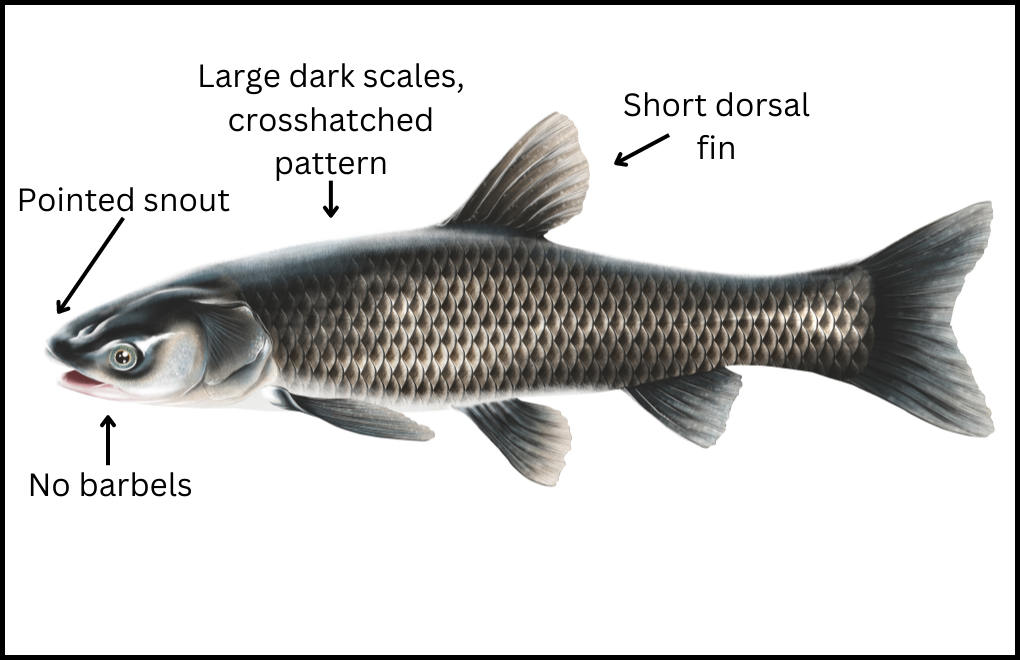
Black Carp
- Closely resembles the Grass Carp.
- Weigh up to 36 kg and exceed 1.5 metres (5 feet) in length.
- Large scales with dark edges appear crosshatched.
- Eyes sit even with the mouth.
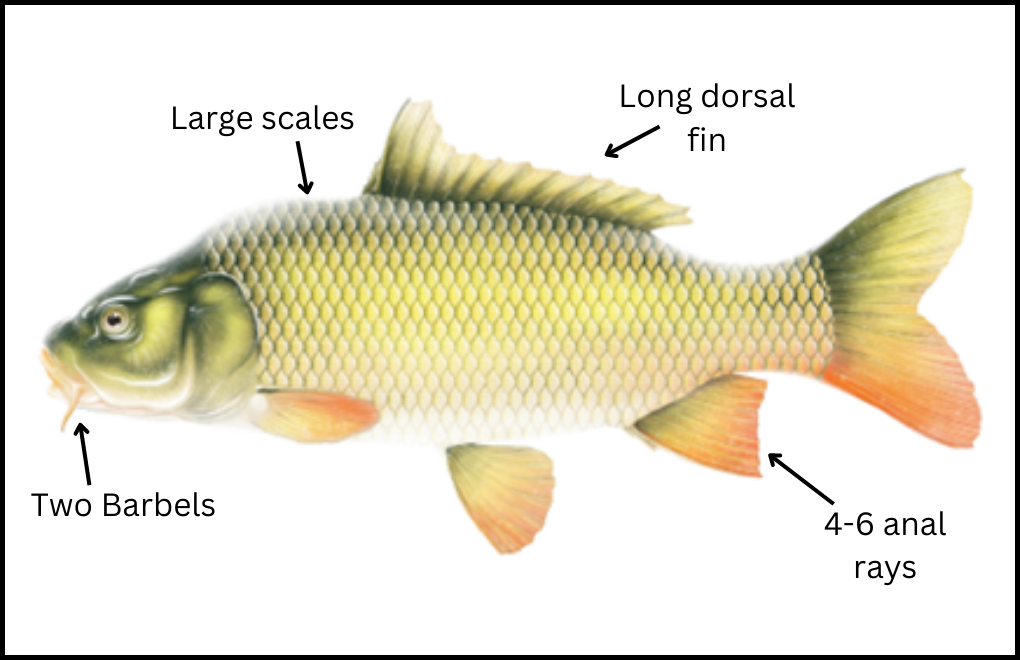
Common Carp
Be sure not to confuse Asian carps with Common Carp. Common Carp are originally from Asia, but were introduced to Canadian waters over 100 years ago and are commonly mistaken for Asian carps. This diagram shows the key identification features to look out for.
What You Can Do
- Learn how to identify Asian carps and how to prevent the introduction or spread of these unwanted species.
- Never buy or keep live Asian carps. It is against the law to keep an Asian carp as a pet, use it as bait, or have a live Asian carp in your possession.
- If you are certain you have captured a Grass Carp, do NOT release it alive. Kill the fish without damaging the head or eyes. Gut the fish and keep it in a cooler with its head above the ice, then call the Invading Species Hotline at 1-800-563-7711. Fisheries and Oceans Canada will come to collect the specimen.
- If you have any information about the illegal importation, distribution, or sale of live Asian carps, report it immediately to the MNRF at 1-877-847-7667, toll-free anytime. You can also call Crime Stoppers anonymously at 1-800-222-TIPS (8477).
- If you’ve seen as Asian carps or another invasive species in the wild, please contact the toll-free Invading Species Hotline at 1-800-563-7711 or visit EDDMapS to report a sighting.
Resource Files
Gallery
OFAH/MNR Invading Species Awareness Program. (2021). Asian Carps. Retrieved from: www.invadingspecies.com.
This factsheet may be reproduced for non-commercial purposes.
Header photo by Asian Carp Regional Coordinating Committee | Fish illustrations © Invasive Species Centre

